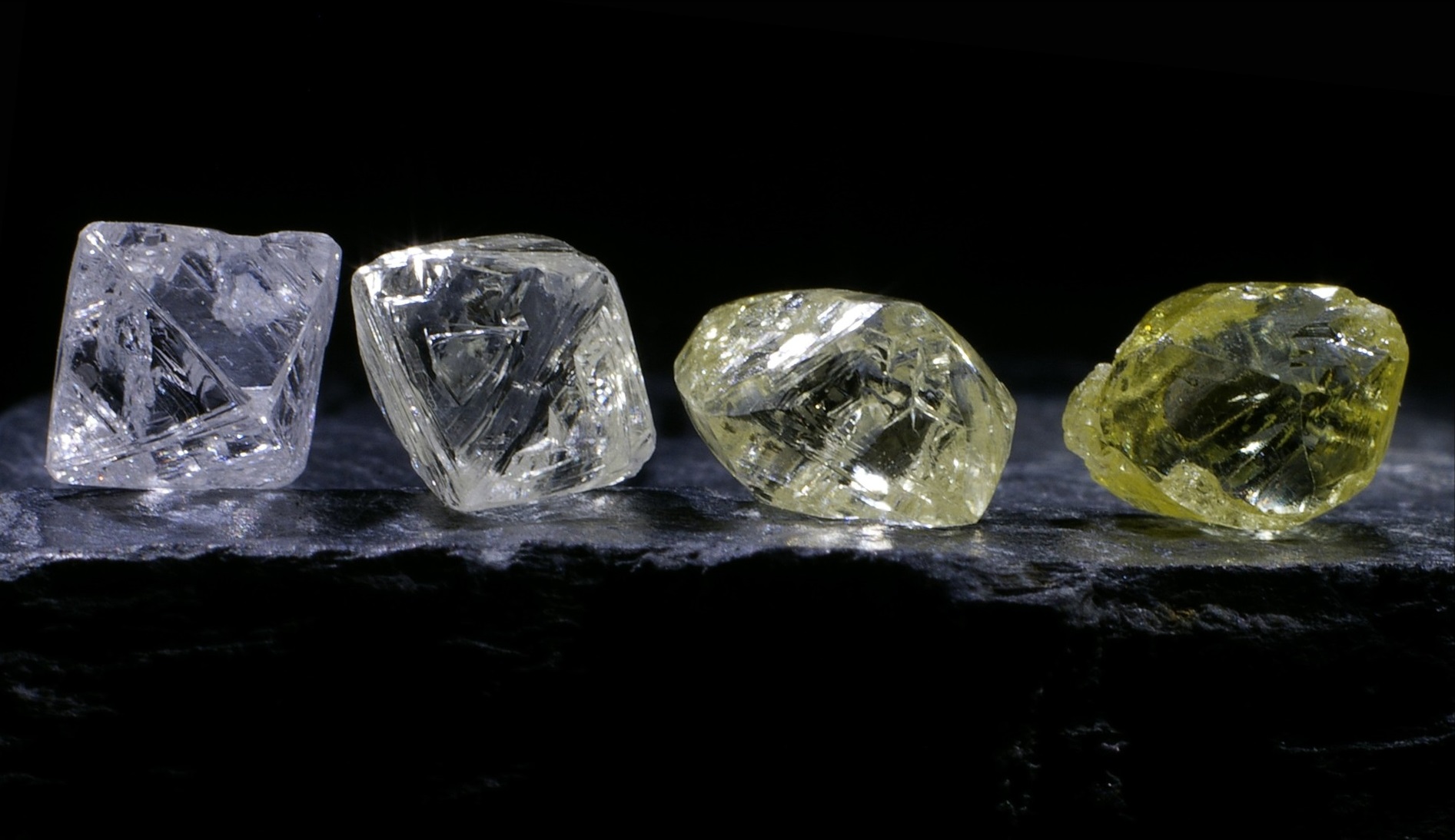Diamonds: Economic Driver of Canada's North
With two of three Canadian diamond mines in their final phases of production, geoscientists are focusing on exploring and prospecting new sources to ensure Canada remains one of the top three diamond producers in the world.
On this page, you will find information about diamonds, UAlberta's diamond research training school, and the work our scientists are doing in this area.
What Is a Diamond?
Although diamonds were coined as a girl's best friend by Carol Channing (in 1949) and Marilyn Monroe (in 1953) in Gentlemen Prefer Blondes, these precious minerals are one of Earth's oldest natural marvels that have been forming beneath the Earth's crust for billions of years.
Some people often refer to diamonds as rocks, but it's a misnomer because diamonds are not rocks - they are minerals. Rocks usually comprise many fragments of minerals. For example, kimberlite is an igneous rock made up of olivine and pyroxene minerals, and it is most often mined in pursuit of diamonds buried within the rock's mineral makeup.
Diamond Formation
A diamond is the solid form of pure carbon where the element's atoms arrange themselves in a crystalline structure known as diamond cubic.
The diamond cubic structure occurs because the four valence electrons of each carbon atom bond with the four electrons of a neighbouring carbon atom, creating a tetrahedral lattice. Due to this structure, diamonds are the hardest naturally occurring mineral with the highest thermal conductivity on the planet, with the ability to conduct heat five times faster than copper and withstand heat between 700°C and 3000°C depending on atmospheric conditions and pressure.
Diamonds are coveted for their beauty, but contrary to popular belief, they aren't any more rare than other gems like rubies. However, their molecular properties (such as their strength and heat resistance) make them more durable and valuable. They are no longer just a "girl's best friend," but the best friend of scientists and engineers who use diamond materials to improve technologies from solar power to water purification.
Diamond research & news
Learn more about our diamonds research and work that are making headlines.

Uncovering new understanding of Earth’s carbon cycle
UAlberta PhD student authors paper shedding new light on Earth’s deepest mechanisms using information from diamonds.

Scientists name newly discovered mineral after UAlberta professor
Heamanite-(Ce), a new mineral discovered inside a diamond, is named after Professor Larry Heaman.
Graduate Studies

Diamond Exploration Research Training School (DERTS)
With a critical need to maintain Canada as one of the top three diamond producers in the world, the Diamond Exploration Research Training School is coaching the next generation of diamond explorers to help sustain new discoveries.
Pros of the Program:
- DERTS is a graduate student program with both masters and doctoral levels.
- The program has an annual internship component where students work in the diamond mining and exploration industry or with government sector geological surveys to get practical experience and make valuable connections.
- The program takes advantage of world-class kimberlite drill core collections housed at both UBC and U of A to provide intensive instruction and mentoring from industry and geological survey professionals.
For more information, click the video thumbnail above or visit the DERTS program page.
Who Is Working with Diamonds?
Through programs like Diamond Exploration Research Training School (DERTS), the University of Alberta is training the next generation of scientists in the latest advances in diamond exploration, including geochronology, indicator mineral analysis/interpretation, volcanology, exploration geophysics, and remote-sensing.
Learn more about the faculty overseeing the latest diamond exploration prospects and their research interests below.
- Benoit Rivard
Benoit Rivard's Research Focus: geoprocessing; development and application of innovative hyperspectral techniques for mineral exploration, combined optical and radar airborne and satellite remote sensing for geologic mapping and environmental monitoring; infrared characterization of terrestrial materials
- Graham Pearson
Graham Pearson's Research Focus: mantle evolution, geochemistry, and petrology; radiogenic isotope geochemistry; trace element geochemistry; age and origin of diamonds; tracing diamonds using elemental and isotopic methods; origin of the continental lithosphere, especially cratons; PGE geochemistry, Re-Os and Pt-Os isotope geochemistry; origins of alkaline/low melt fraction rocks; application of ICPMS to molecular pharmacology (metallodrugs)
- Martyn Unsworth
Martyn Unsworth's Research Focus: electromagnetic geophysics, plate tectonics, volcanology, and geothermal energy
- Robert Luth
Robert Luth's Research Focus: igneous petrology, experimental geochemistry, the buffering capacity of mantle peridotite and implications for diamond formation, melting of carbonated harzburgite, interaction of carbonatitic melts with mantle peridotite, and the synthesis of diamond in systems analogous to nature
- Thomas Chacko
Thomas Chacko's Research Focus: metamorphic petrology, stable isotope geochemistry, crustal evolution, Precambrian geology, granulites, and granites
- Thomas Stachel
Thomas Stachel's Research Focus: diamond geology (stable isotope composition, nitrogen contents, and aggregation levels)
Are you looking for another professor studying diamonds?
How to Apply to DERTS
Unlike many other programs at UAlberta, DERTS applicants are assessed based on their research interest aligning with one of the other investigators.
To apply, we invite applicants to either:
- Contact the Program Coordinator, Anetta Banas at abanas@ualberta.ca for admission information, or
- Contact the researchers directly to discuss research opportunities
Once applicants are successfully vetted and approved by the DERTS admissions committee, they will be led through the Graduate Studies application portal to facilitate enrolment.
Ready to unearth your potential?
Get more information about how you can start an exciting career in diamond research by contacting the DERTS graduate studies program.
